The American Drones Saving Lives in Rwanda
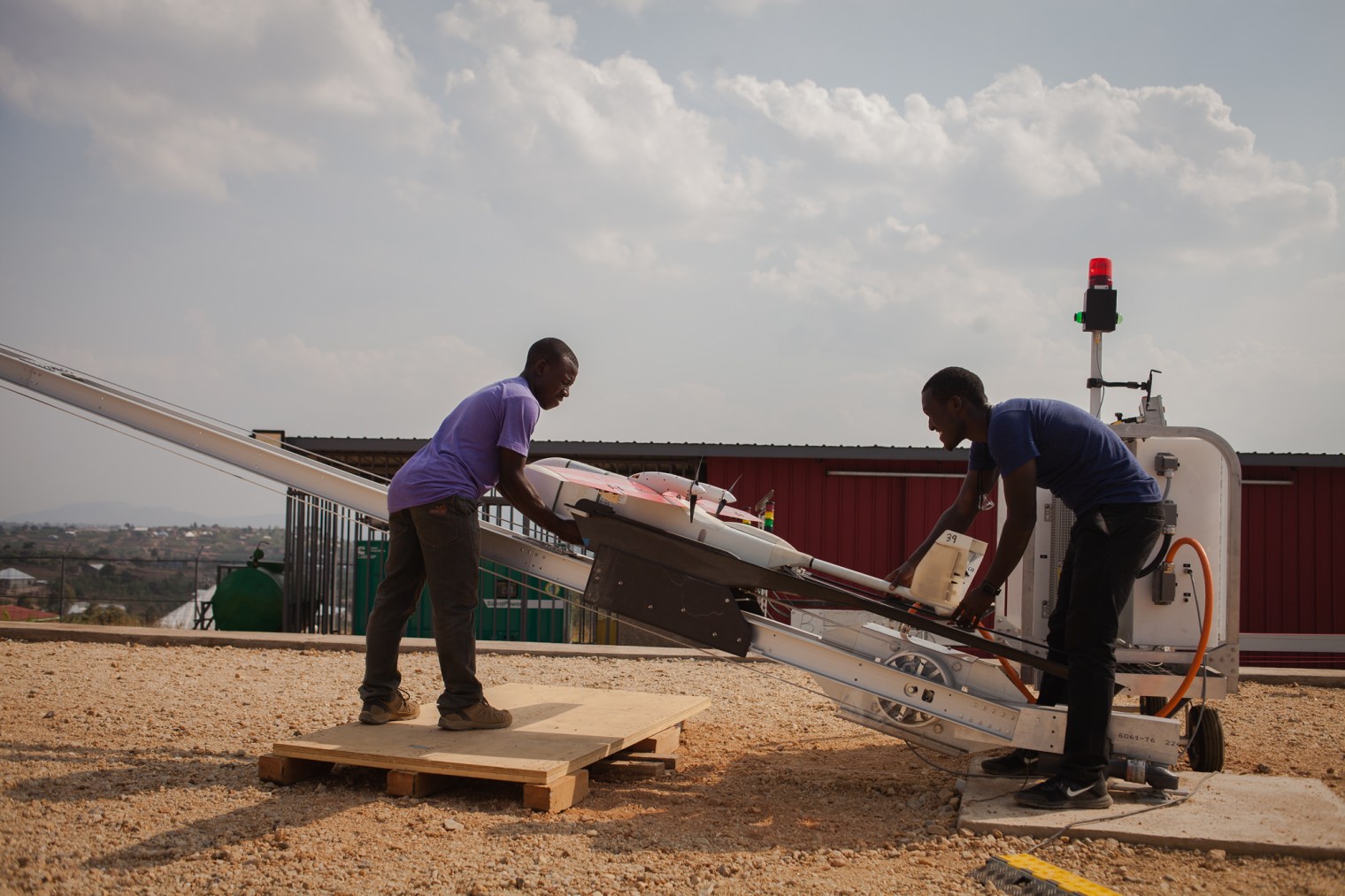 Zipline technicians prepare the Zipline drone for launch at the company’s headquarters in Muhanga, Rwanda. on July 20, 2017 Esther Mbabazi for TIME
Zipline technicians prepare the Zipline drone for launch at the company’s headquarters in Muhanga, Rwanda. on July 20, 2017 Esther Mbabazi for TIME
U.S. startup Zipline has teamed up with the Rwandan government to deliver blood supplies by drone
by Aryn Baker / kigali, rwanda | Photographs by ESTHER MBABAZI
For several days Delphine Twese Hamwe’s 2-year old daughter, Ghislane Ihimbazwe, had been screeching in pain as fever wracked her tiny body. A nurse at the local clinic in central Rwanda told her that an acute form of malaria was attacking her daughter’s red blood cells. There was nothing the clinic could do to save her life, so they called an ambulance. But by the time mother and child arrived at the district hospital in Kabgayi, Ghislane had stopped moving. “We arrived too late,” Hamwe says. “There was no sign of life. I thought she was dead.” The nurses offered a blood transfusion as a last resort. Hamwe, numb and distracted, agreed. She was already on her phone, messaging the bad news to family back in the village.
Meanwhile, a lab technician at the hospital laboratory was typing out his own message, a request for two units of pediatric red blood cells, O+. Normally he would have dispatched a car and driver to the central blood bank in the capital, Kigali, a 3-hour round trip. But this time he was trying something new. His phone flashed a confirmation message: the blood was on its way, with an estimated delivery time of just six minutes.
Before long the high-pitched whine of a drone could be heard circling the hospital grounds. As it passed over the lab’s parking lot, it released a red cardboard box, attached to a paper parachute. Inside were two packets of blood, wrapped in insulating paper and still cold from refrigeration. A nurse rushed the blood over to the emergency wing, and within minutes, it was pumping into Ghislane’s small, limp body through an IV. The child opened her large brown eyes. It was Dec. 21, 2016, and Ghislane had just become the first person in the world who owes her life to a drone delivery.
For all the talk of unmanned vehicles changing our lives in the West, they are already doing so in the east African nation of Rwanda. Zipline, a U.S. startup, has partnered with the Rwandan government to launch the world’s first commercial drone delivery service, ferrying vital medical supplies to its far-flung hospitals by air. Since December 2016, the company has dispatched more than 4000 units of blood products to 12 hospitals—red blood cells, platelets, and plasma that would have otherwise needed to travel by a treacherously tangled road network, losing precious hours in the race to save lives.
“Before, it took at least three hours to get blood in an emergency,” says Dr. Roger Nyonzima, head surgeon at Nyanza Hospital’s maternity ward, which is about 100 km. from Kigali. “Three hours can make the difference between saving or losing a life. Now we get blood in 15 minutes. Fifteen minutes, we can work with.”
The success of Zipline in Rwanda has inspired the company to look further overseas, and even to the U.S., for expansion. In August, Zipline announced that it would expand into Tanzania, a country 35 times the size of Rwanda. A Latin America launch is in the works as well, says co-founder Keller Rinaudo. “The reality is, moms die in every country in the world for [lack of blood]. Rwanda was just the first country to do something about it.”
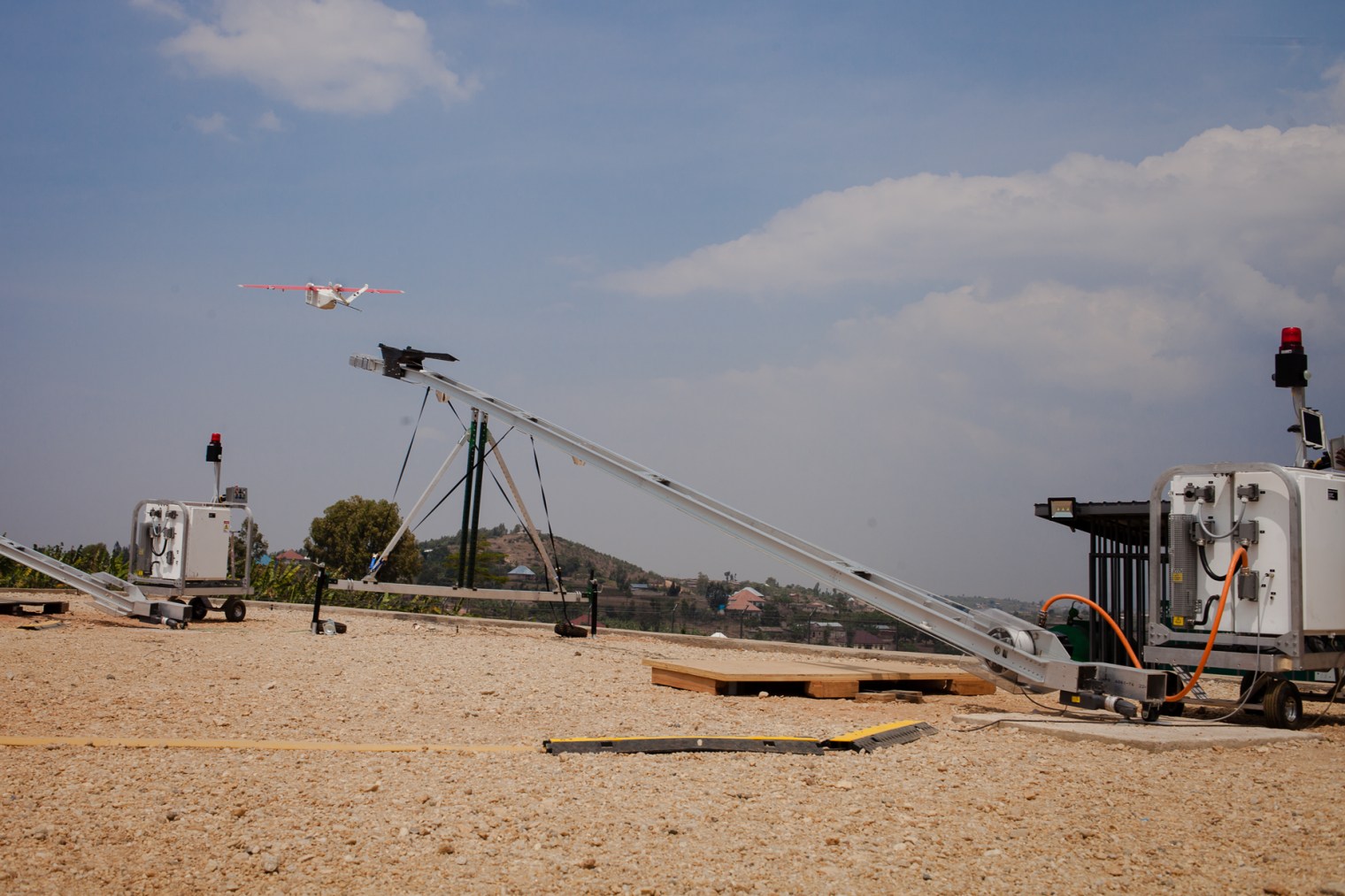 A Zipline drone carrying blood to Gakoma Hospital takes off from Zipline headquarters on July 22, 2017. Esther Mbabazi for TIME
A Zipline drone carrying blood to Gakoma Hospital takes off from Zipline headquarters on July 22, 2017. Esther Mbabazi for TIME
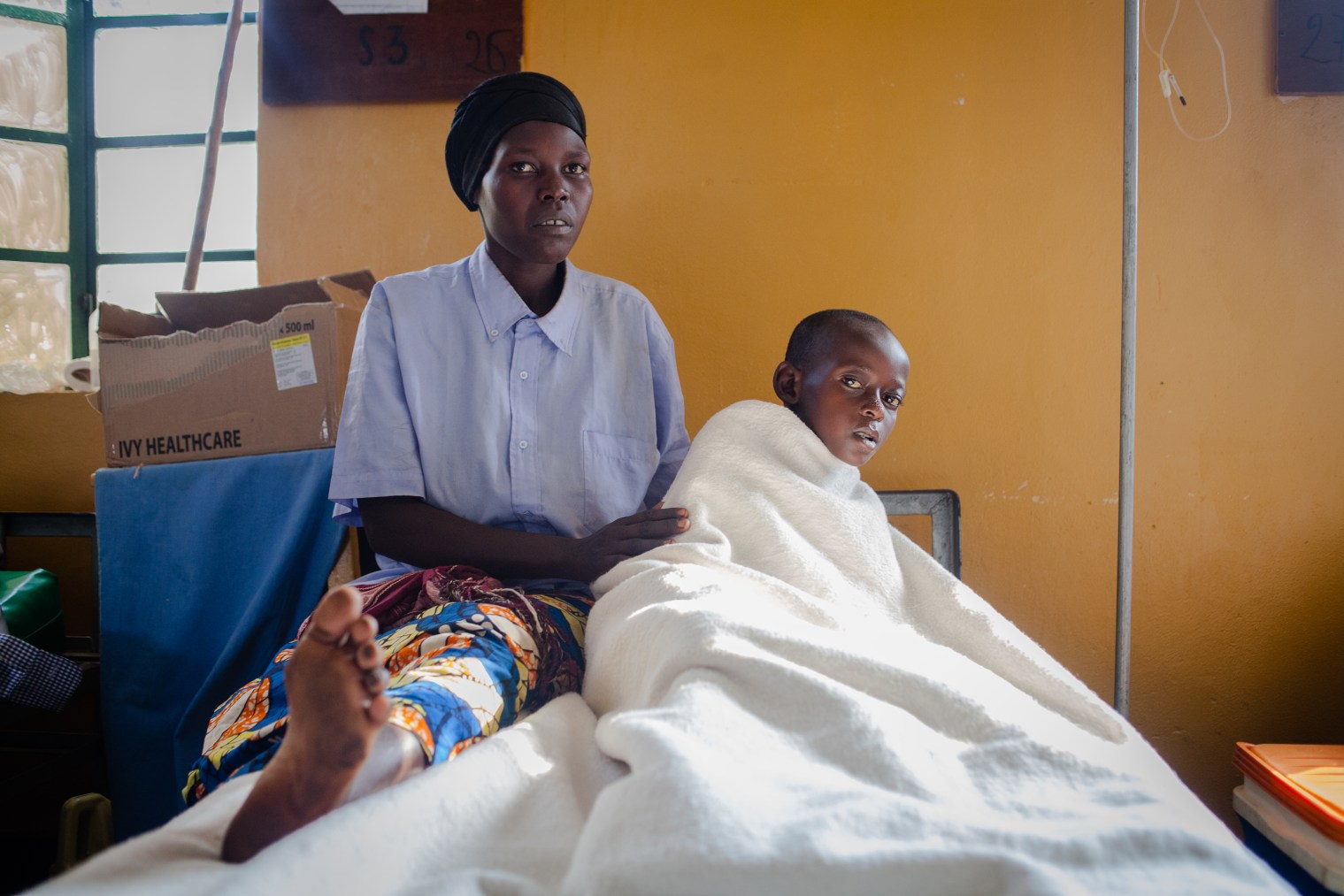 Donata Mubandakazi with her 10 year-old son Jean following surgery for an unidentified infection on his leg. He was given plasma from a Zipline drone. Esther Mbabazi for TIME
Donata Mubandakazi with her 10 year-old son Jean following surgery for an unidentified infection on his leg. He was given plasma from a Zipline drone. Esther Mbabazi for TIME
Blood is one of the most vital elements of modern medicine. Without it, major surgery is impossible, car accidents are more deadly, and the risk of death in childbirth is exponentially higher. Severe bleeding after childbirth kills roughly 100,000 women worldwide each year. Most could have survived, had their doctors had access to blood for their hemorrhaging patients.
But in large swaths of Africa, where maternal mortality rates are among the world’s highest, hospitals don’t have the budget, or even the electricity, to maintain their own refrigerated blood banks. Rwanda’s maternal mortality rate is improving, but it is still 20 times worse than the United States (and 97 times worse than some countries in Europe), largely due to post-partum hemorrhages. According to Rwanda’s Ministry of Health, nearly half of all the units of blood delivered nationwide are for complications in childbirth.
Dr. Nyonzima’s maternity ward, a cool, low slung bungalow whose wooden benches creak under the weight of heavily pregnant women wearing brightly colored wraps, sees on average ten births a day. At least a third, he says, are caesarean sections that require blood, which is stocked—now via drone delivery—in small amounts at the hospital’s lab. But at least twice a week he has an urgent case, where there is simply not enough blood on hand, or not the right kind for his patient.
That’s when the drones become an airborne emergency service, instead of the usual daily delivery option. When he first heard, in March, that his hospital would be using Zipline to deliver blood, he was incredulous. “I knew there were drones for surveillance, and I knew that militaries use them to kill enemies, but I didn’t know that drones could save lives,” he says. “Now I don’t care how the blood comes, as long as it comes in 15 minutes.”
Claudine Ndayishimiye had been in labor for two days in March when she started bleeding heavily. Her uterus ruptured, and midwives at the local clinic couldn’t help her. They rushed the 26-year-old to Kabgayi’s maternity ward, where she recalls hearing, just before passing out, a doctor telling the nurse to call for blood. As Ndayishimiye tells her story from a tiny hamlet in Gitamara district, a distant whine announces the passage of a drone before the flashing green and red lights on its wingtips pass into view. One of the Zipline vehicles is returning to the nearby base after a successful delivery.
Ndayishimiye, a small, energetic woman with a ready laugh, was pregnant when a Zipline community liaison came to her village to explain what the drones were for, but she never thought she would need one until she arrived at the hospital. “If it had happened when blood was still being brought all the way from Kigali in an ambulance, well, in the situation I was in, I wouldn’t have survived,” she says with an exaggerated shudder. “I was so happy when I woke up and saw that my baby was alive.”
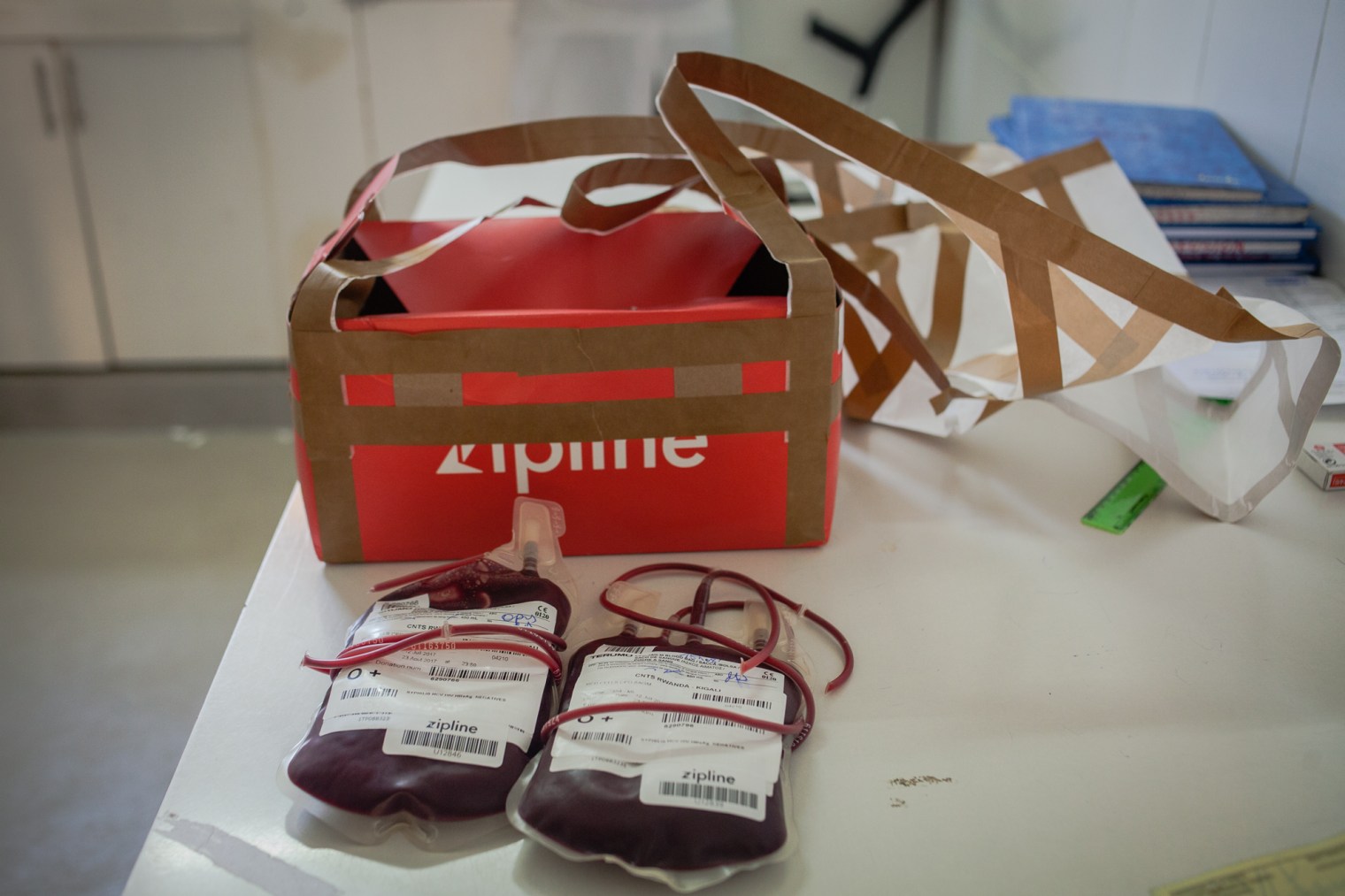 A Zipline blood delivery in Kabgayi Hospital laboratory shortly after arrival on July 21, 2017. Esther Mbabazi for TIME
A Zipline blood delivery in Kabgayi Hospital laboratory shortly after arrival on July 21, 2017. Esther Mbabazi for TIME
The idea behind Zipline came from a list of lives lost in rural parts of Africa due to a shortage of essential medicines. Robotics expert Keller Rinaudo and aviation consultant Will Hetzler, former roommates from Harvard, met a computer programmer and public health researcher, Zachary Mtema, in Tanzania. As part of a project, Mtema had developed a text-messaging system for doctors and nurses to log cases where they lacked the medical supplies they needed to save the lives of patients suffering from easily-solvable afflictions like post-partum hemorrhages, snake bites and attacks by rabid animals.
“It was essentially a database of death,” says Rinaudo, who recalls scrolling through thousands of heartbreaking entries. “We were like, this is a problem that we can solve. It’s just a question of getting the right medicines to the right place, quickly.” For Rinaudo, with his experience in robotics, and Hetzler, who had a background in aviation, drone deliveries seemed like the obvious solution. “The speed at which you can get somewhere in the air is drastically faster than the speed at which you can get somewhere on the ground,” says Rinaudo
On any given day, a dozen drones launch and land at Zipline’s Rwanda headquarters, a former cornfield in the city of Muhanga, about an hour’s drive from Kigali. The steady rhythm of packing, launching, collecting and charging the drones belies the groundbreaking technological advances in robotics, autonomous navigation and aerospace management that underpin the business. That’s the way the founders want it. “Zipline isn’t a drone company,” says Rinaudo, “Zipline is a healthcare logistics company.”
That means that the design of the electric aircraft, called “Zips,” diverges wildly from the quad copters currently being used by most drone companies. Instead the Zips look like small propeller airplanes, enabling them to fly faster and longer—150 km—on a single charge, in any weather short of a hurricane. The zips drop their payloads via parachute, instead of landing, to minimize the number of people that need to be trained on how to interact with a drone. All the hospitals need is someone who can send an order, and pick up the blood when it lands.
Once an order arrives in the computer database, Zipline’s blood bank technicians pull the required stock from the state-of-the-art blood storage facilities located onsite and pack them into sturdy cardboard boxes that are already fitted with parachutes. The drones can currently carry up to 2 kg of blood products at a time, either two units of adult blood, or a combination of platelets, plasma and juvenile blood. (The next generation of Zips, now in production, will be able to handle a greater payload.) Drone operators load the boxes into the Zips, which currently cover more than half of Rwandan territory. A second facility is planned to cover the rest of the country by the end of 2017.
The operator loads the Zip onto a catapult-type launch mechanism, enters the destination on a tablet computer, pushes the button, and, with a high-pitched whine, the Zip is airborne. The whole process takes an average of 7 minutes, from order to launch. Once the zip nears its predetermined destination, it sends an automated text message to the hospital, announcing the exact arrival time. Then it swoops down towards the designated landing zone, drops its payload, and circles back towards home base.
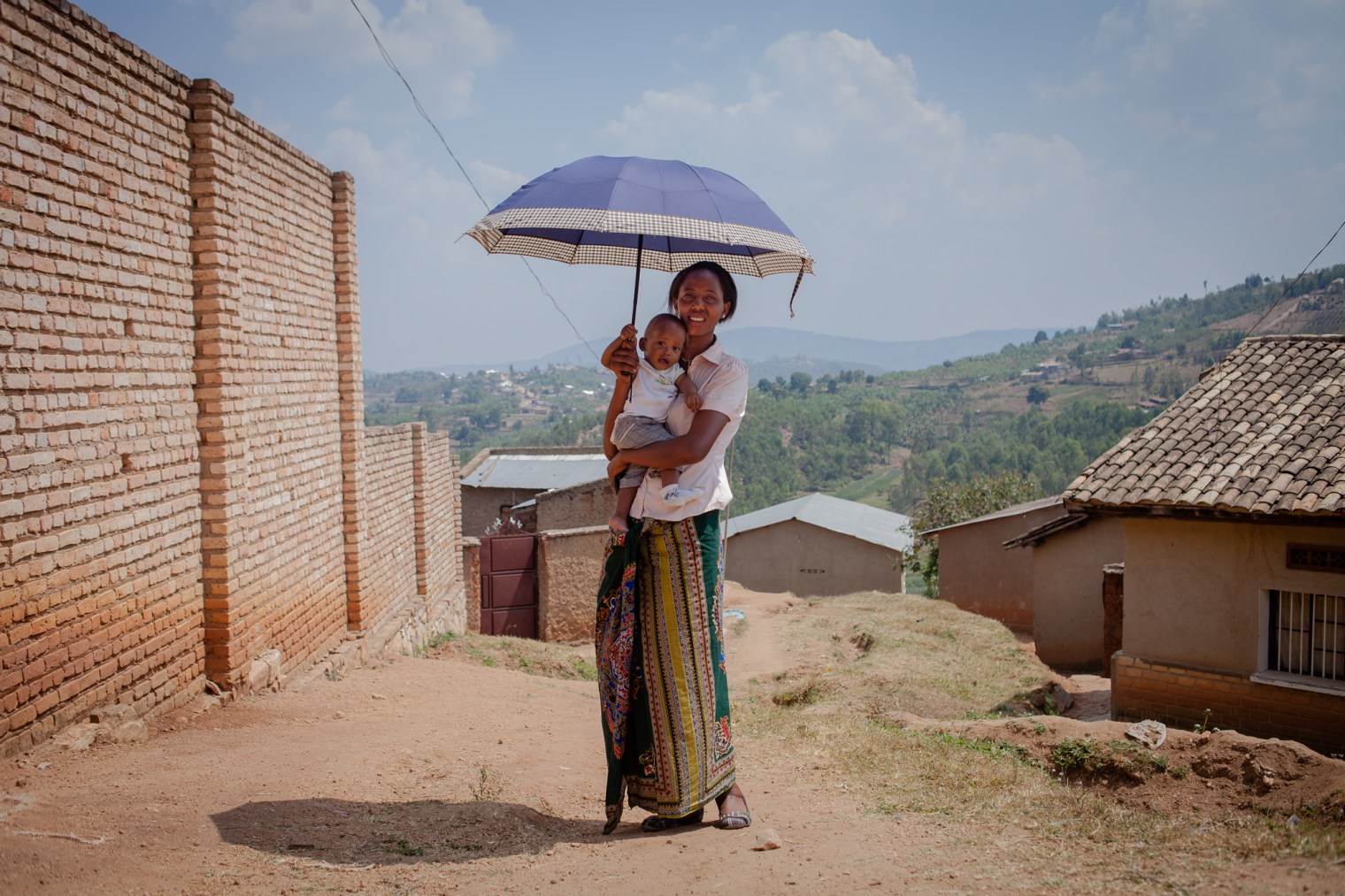 Franciose Mukeshimana with her eight month old baby Bertrand in front of their home in Muhanga on July 21, 2017. She was the first mother to receive blood from Zipline. Esther Mbabazi for TIME
Franciose Mukeshimana with her eight month old baby Bertrand in front of their home in Muhanga on July 21, 2017. She was the first mother to receive blood from Zipline. Esther Mbabazi for TIME
Zipline also guarantees doctors access to rarely used products, like frozen plasma and platelets to promote clotting, that require specialized freezers—machinery that most Rwandan hospitals cannot afford. When Jean Imana Izabayo’s lower left leg swelled to nearly twice its size with an infected wound, the 10-year-old schoolboy was rushed to Kabgayi’s hospital, where surgeons pumped him full of antibiotics and started cutting away dead tissue. But his platelet count was catastrophically low.
Before Zipline, the surgeons would have had to choose between sending him to Kigali for treatment, or amputation. Instead, the surgeon put in an order for platelets, and by the time he started cleaning out the wounds, the cream-colored plastic sachet had already landed at the drop zone.
A few hours later Izabayo’s mother, Donata Mubandakazi, stroked her son’s sweating brow as he recovered in the hospital ward. She had never heard of Zipline, and thought it was a joke when other patients told her that a miniature plane had saved her boy. Once she understood the concept, she unleashed a brilliant smile, all but erasing the lines of worry that had etched her face while her son was in surgery. She said she wished she could have seen the drone. “It’s a miracle,” she gushed. “It is fast, and we get blood to treat our children without having to go too far.”
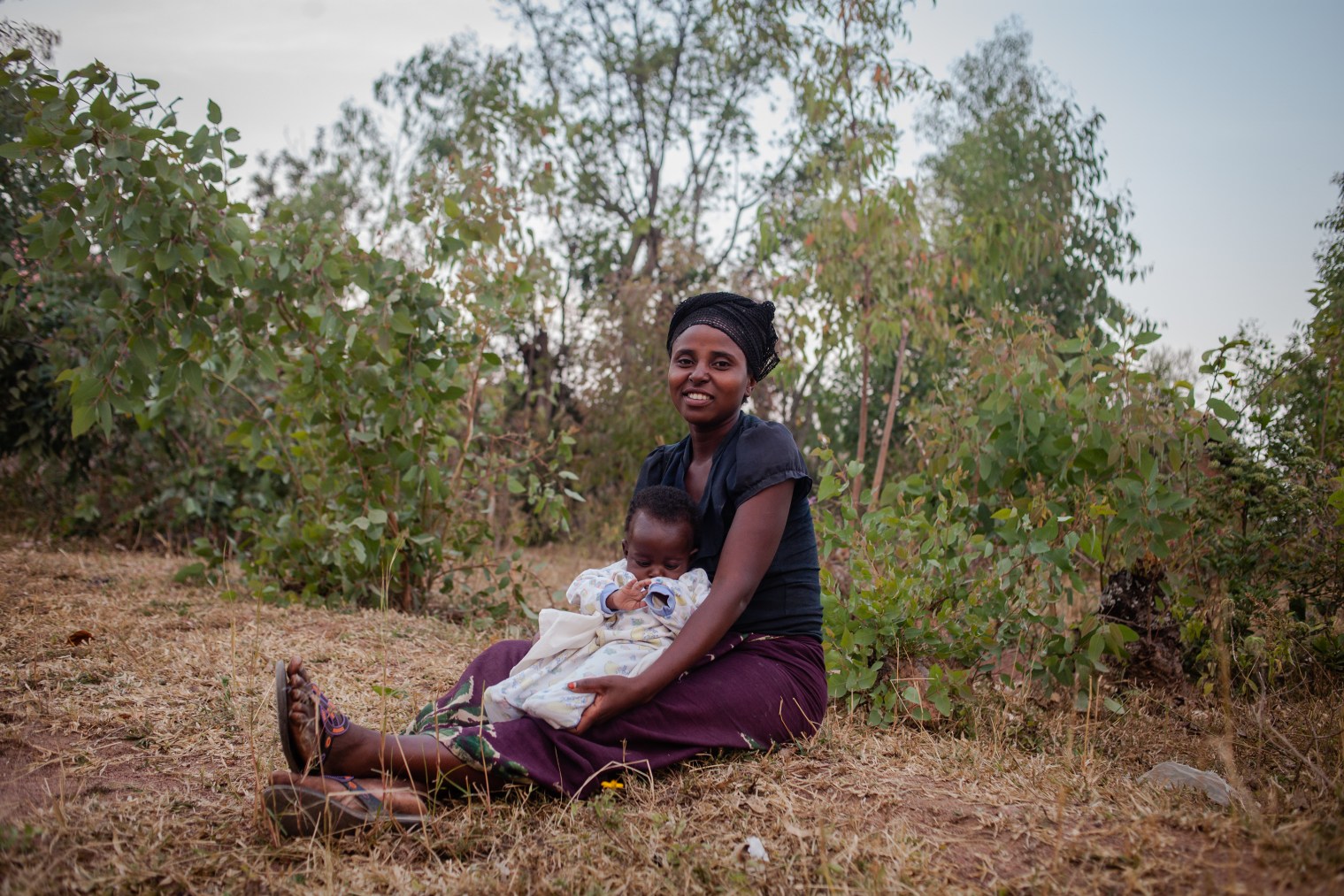 Claudine Ndashimye, 26, with her baby Rabertin, in the Muhanga district, Rwanda. She received blood from Zipline after having complications with her pregnancy. Esther Mbabazi for TIME
Claudine Ndashimye, 26, with her baby Rabertin, in the Muhanga district, Rwanda. She received blood from Zipline after having complications with her pregnancy. Esther Mbabazi for TIME
Zipline owes its success in Rwanda as much to American technological prowess as it does a government willing to take risks on innovations in the health, technology and aerospace realms. The United States, with its complex federal regulations, densely populated airspace, and reasonably adequate road networks has so far been resistant to establishing a national commercial drone delivery network, whether for health care items or for hamburgers.
But that is about to change, partly based on Zipline’s record of safety and success in Rwanda. Blood and medical supply shortages affect rural hospitals in the U.S. just as they do Rwanda, and Zipline, after an invitation from the White House in 2016, is now working with the U.S. Federal Aviation Authority to launch a similar service in parts of the U.S. in 2018.
In Rwanda, meanwhile, Zipline expects to ramp up deliveries as more hospitals are added to its network every month. Even then, it’s unlikely that the demand will make a dent in the system’s current capacity of 500 deliveries a day. That excess capacity opens up extraordinary options, says Rwanda’s technology minister Jean Philbert Nsengimana, who was the first to embrace Zipline’s proposal for the country. Other scarce, expensive or difficult to store medical supplies and drugs would benefit from a speedy and centralized distribution network, he says. He mentions vaccines for outbreaks, antivenins for snakebites and rabies injections. “These are the kind of things you can’t stock in every health center or hospital,” he says, yet are vital for staving off death.
Sure, he adds, drones will eventually transform commerce world-wide. But before that, drones will revolutionize health care. “We are now at the point where we can make sure that every patient going to a hospital will never have to come out again without the one thing that could have saved his life.”
Aryn Baker’s reporting for this story was supported by Merck for Mothers